Concert Band and Symphonic Band
8:00 PM, Musical Arts Center – Livestream link
Concert Band, Jason H. Nam, conductor
The American Dream by James Beckel
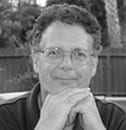
The American Dream was written by IU alumnus James Beckel and is the fourth and final of his Night Visions. The work is dedicated to Mr. and Mrs. Charles O’Drobinak and commemorates their success in building their business. As the concluding movement, fanfare abounds in celebration of the O’Drobinak’s success, with brass choirs and spritely woodwind runs. Beckel also includes a quote of the hymn For the Beauty of the Earth, which he says is “meant to pay homage to the wonderful natural resources that bless this great country.” From the celebration of success to the lauding of our land, Beckel paints an idealistic portrait of America.
A native of Marion, Ohio, James Beckel graduated from the Indiana University School of Music and has been Principal Trombonist of the Indianapolis Symphony since 1969. He is also on the music faculty at DePauw University and the University of Indianapolis. Additionally, he is an active composer and arranger.
Mr. Beckel has received many composition grants. He has been an Individual Arts Fellow through the Indiana Arts Commission and the National Endowment for the Arts, and recently was one of 50 composers chosen nationwide to be part of the Continental Harmony Project. Liberty for All was written for that commission from Composers Forum. The Glass Bead Game was nominated for a Pulitzer Prize. Mr. Beckel has also written several works for brass choir and brass quintet. In 2004 the Indianapolis Symphony premiered and commissioned Fantasy after Schubert, dedicated to Music Director Mario Venzago for the opening subscription concerts in celebration of their 75th season. – note by Maggie Eronimous
The American Dream was last performed at Indiana University in 2016.
The Nature of Trees by Cait Nishimura

The Nature of Trees is dedicated to everyone in the music education community. To me, the nature of trees is love, resilience, patience, strength, adaptability, interconnectedness, and so much more. The nature of trees is to co-create an environment in which everyone can thrive, and I think this is a perfect metaphor for what we do in music education.
This piece, premiered tonight, was commissioned by the National Band Association at Indiana University (NBA-IU) to be premiered by the IU Concert Band, conducted by Dr. Jason Nam. The students asked me to create a piece that would explore the emotional experience of returning to band after an extended hiatus due to the COVID-19 pandemic. I wanted to give them something hopeful, but I also wanted to be honest. This chapter of our lives has been tumultuous, heartbreaking, and transformative; we are not returning to the world we knew before. Writing this piece meant facing these feelings and allowing them to exist alongside gratitude and optimism. And so, this piece includes a wide spectrum of emotions, including moments of joy, yearning, hesitation, nostalgia, and of course, hope.
The members of the NBA-IU collaborated with the IU Center for Rural Engagement, and invited four local high school bands and their directors to participate in this project:
- Paoli High School (Bill Laughlin and Christian Karkosky)
- Salem High School (Bonnie Harmon)
- Brown County High School (Matt Finley)
- Southridge High School (Lannie Butler)
I am grateful to these communities for their support of this project and thrilled to have been able to contribute to a meaningful musical experience for their students. – Cait Nishimura
Orient et Occident by Camille Saint-Saëns
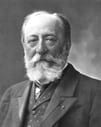
The years of the French revolution provided an important development in the history of bands with the rise of the large wind band replacing Harmoniemusik of the Classical Era. Harmoniemusik, a chamber ensemble of six or eight parts, 2 each of oboe, horns, and bassoons and sometimes clarinets, was the preferred wind combination of the era. An extensive repertoire exists, including the serenades and divertimentos of J. C. Bach, Haydn, and Mozart, as well as numerous transcriptions of opera excerpts, overtures, suites, and even complete symphonies.
With the rise of more public bands as represented by the large wind ensembles such as the Garde Nationale Band which preformed for special occasions with original music composed by Mehul, Gossec, Catel, Berlioz, and others, the modern band came into existence. It was in this tradition that Camille Saint-Saëns composed the first of his four works for band, Orient et Occident, in 1869.
A prolific and agile composer, Saint Saëns’ output includes three symphonies, concertos for various instruments, a wide variety of chamber music and thirteen works for the stage. At the time he composed his Opus 25, he was also working on his great Biblical opera Samson et Dalila, which contains similar references to eastern music as does the march. Orient et Occident was written at the beginning of a twenty-year period during which he composed most of the works for which his remembered today.
Although designated a grand symphonic march, Occident and Orient is almost a tone poem in the tradition of Franz Liszt. The “trio” section of the march from represents the Janissary music of the near East, including the use of percussion and unison Eastern melodies. The western aspect of the work includes a broad, noble melody and dramatic counterpoint worthy of the English coronation marches of Elgar and Walton. – note by Loras John Schissel
Occident et Orient was last performed at Indiana University in 2006.
Conductor Tess Jones is pursuing the Doctor of Music degree in Wind Conducting and serves as an Associate Instructor at the Indiana University Jacobs School of Music. A native of Abilene, Texas, Tess received a Bachelor of Music Education from the University of North Texas and a Master of Music in Wind Conducting from Texas State University. She served as the Director of Bands at Craig Middle School in Abilene, Assistant Director of Bands at Waltrip High School in Houston, and Director of Bands at Levi Fry Intermediate School in Texas City, TX. In addition to her studies, Tess works as a staff member for the George N. Parks Drum Major Academy in the summers. Tess is an alumnus of Mu Phi Epsilon and Kappa Kappa Psi, and holds membership with the Texas Music Educators Association, the College Band Directors National Association, and the National Flute Association.
In the Open Air, In the Silent Lines by Aaron Perrine
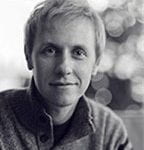
Perrine’s In the Open Air, In the Silent Lines was inspired by the preface to Walt Whitman’s poem Leaves of Grass. Whitman’s preface begins with “This is what you shall do: Love the earth and sun and the animals, despise riches, give alms to everyone that asks” and concludes “and your very flesh shall be a great poem.” Perrine says he finds in these words an elegant, idealistic call to action that “illustrates the great beauty and potential found in all of us.” Melodic fragments drift in and out of the soundscape of the peace, quietly hopeful with each appearance. The composer hopes that In the Open Air inspires audiences and performs to “listen, reflect and find new and creative ways to make meaningful and positive change.”
With works in a variety of genres, Aaron Perrine’s music has been performed by some of the leading ensembles and soloists across the United States and beyond. He is a two-time winner of the American Bandmasters Association Sousa/Ostwald Award for his compositions: Only Light in 2015 and Pale Blue on Deep in 2013. Only Light—commissioned by the University of Iowa Symphony Band, Richard Mark Heidel, conductor—was included on the latest University of Kansas Wind Ensemble recording (Of Shadow and Light, Klavier). Another one of his compositions, Temperance, recently won the 2017 CBDNA Young Band Composition Contest. His music for winds has also been featured at the 2017 CBDNA National Conference, multiple regional CBDNA Conferences, The Midwest Clinic, The Western International Band Clinic, and at numerous all-state, state conference and honor band concerts. – note by Maggie Eronimous
This is the first performance of In the Open Air, In the Silent Lines at Indiana University.
Havana by Kevin Day
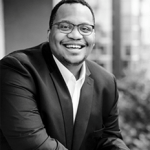
Sorry, Camillo Cabello fans – Day’s Havana has, in the composer’s words, “nothing to do with [the singer’s] mega-hit,” even though he does confess Caballo’s Havana is a guilty pleasure to listen to. Day seeks to paint a musical picture of the Havana
in his work. He achieves this easily: there are an abundance of different dance genres throughout, from the salsa to the mambo to the cha-cha, and in listening to the piece one can imagine wandering the streets of Havana and hearing the many different dances spilling into the street, united by their driving energy. Day hopes that performers and audiences will “tap their foot, bop their heads, and feel the music” – and it’s hard not to.
Kevin Day (b.1996, Charleston, WV) is a composer, conductor, producer and multi-instrumentalist from Arlington, Texas. Day, whose music often intersects between the worlds of jazz, minimalism, Latin music, fusion, and contemporary classical idioms, has more than 150 compositions. A winner of the BMI Student Composer Award and other honors, his works have had numerous performances throughout the United States, Russia, Austria, Australia, Taiwan, South Africa, and Japan. Day has collaborated with the likes of Steven Cohen, Jens Lindemann, Demondrae Thurman, and Jeremy Lewis on concertos for their respective instruments, as well as chamber ensembles like Ensemble Dal Niente, The Puerto Rican Trombone Ensemble, The Zenith Saxophone Quartet, ThTesla Quartet, and many more. He has worked with and has been mentored by distinguished composers Gabriela Lena Frank, Frank Ticheli, John Mackey, William Owens, Julie Giroux, Marcos Balter, Anthony Cheung, Matthew Evan Taylor, and Valerie Coleman. Day currently serves as the vice president for the Millennium Composers Initiative and is an alumnus of Kappa Kappa Psi National Honorary Band Fraternity and Phi Mu Alpha Sinfonia Fraternity of America. He is the composer-in-residence for the Mesquite Symphony Orchestra in Mesquite, Texas, for their 2019-2021 seasons. – note by Maggie Eronimous
This is the first performance of Havana at Indiana University.
Symphonic Band, Eric M. Smedley, conductor
Fanfare and Allegro by Clifton Williams
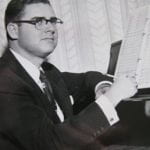
Fanfare and Allegro was the first composition to win the Ostwald Award for original band literature. The award was presented at the American Bandmasters Association convention in 1956. It is written in an exciting contemporary style with brilliant scoring. The work opens with a declamatory fanfare section which leads directly to the allegro movement. It features ostinato figures, brilliant brass, and percussion. Although rhythmically complex, the music is impressive and straightforward, and its resonance and sonority are ideally suited to the medium of the modern band. – note from Band Music Notes by Norman Smith and Alber Stoutamire
Fanfare and Allegro was last performed at Indiana University in 2011.
Conductor Christopher M. Nelson attends the Indiana University Jacobs School of Music where he serves as an Associate Instructor in the Department of Bands and is pursuing a Doctor of Musical Arts degree in Wind Band Conducting. He received his Bachelor of Music Education degree from Brigham Young University, and his Master of Arts in Music degree from Washington State University. Chris has directed bands at the high school level for 7 years, working for the Salem-Keizer, and Alpine School Districts in Oregon and Utah, respectively. He has pieces for wind band published by C. Alan Publications, and works as a band arranger, adjudicator, and clinician throughout the Western United States.
Strata by Neil Clifton Cain

When on a mountain trek in Olympic National Park with my father in 2007, I was amazed at the way the forest shifted as we increased in altitude. The flora constantly evolved and thinned out, bearing us onto stretches of steep rock. As the landscape morphed, so did the presence of the mountain and its inhabitants. I felt as if I was slowly entering a strange and foreign land that possessed a profound spiritual dimension that was overwhelming, even scary. The motion of the energy I was immersed in, both inside and out, reminded me of the unfolding of clouds or the shuddering of still smoke when disrupted by wind. These textures and forms create the basis for this musical portrait of passage through the various strata of a deeply internal, spiritual, and emotional realm. – Neil Clifton Cain
Tonight marks the premiere of Strata, which was composed in 2019-2020 for the Indiana University Symphonic Band as part of the Hammer and Nail collaboration series with the Jacobs School of Music Composition Department.
Fantasie of Passage by Marcus S. Grant
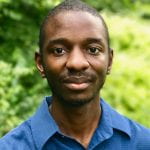
Marcus Grant wrote Fantasie of Passage for solo trumpet and piano while a student at the Indiana University Jacobs School of Music in 2016. The expanded wind ensemble and trumpet version was created in 2020, generated from a consortium of which Indiana University was a member. The piece was premiered by the Clover Hill High School Wind Ensemble with Brianna Gatch conducting and Brandon Sklute as trumpet soloist. Tonight is the Indiana University premiere.
Marcus S. Grant is a professional composer, trumpeter, teacher, clinician, producer, and content creator from Virginia. He is the Co-founder and Director of the Trumpeter’s Multi-Track Competition and Seminar, a professor of music theory and aural skills at Virginia Commonwealth University, and contributes compositions and arrangements as a Signature Artist with the world’s leading digital sheet music retailer, Musicnotes.com. Marcus received a Bachelor’s Degree in Music Education at Virginia Commonwealth University and a Master’s Degree in Trumpet Performance at the Indiana University Jacobs School of Music. His primary trumpet teachers were Rex Richardson and Kevin Maloney at VCU, and Joey Tartell at IU. Marcus is driven by the goal to provide transformative opportunities and impactful encounters to all people using his love for music, holding the philosophy that everyone deserves the best experiences in education, and that music is an essential element of those experiences. He seeks to use music to provide education, inspiration, and empowerment to all who are willing to receive it. – Marcus S. Grant
This is the Indiana University consortium premiere of Fantasie of Passage.
Moorside March by Gustav Holst, arr. Gordon Jacob
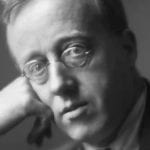
Moorside Suite, from which this march is taken, was commissioned as the test piece for the British National Brass Band Championship at the Crystal Palace, London, in 1928. Holst set the pattern for other composers of international repute who also wrote for the brass band in subsequent years. He left an incomplete version for military band, containing all the first movement and 38 bars of the second, to be completed later. It is not known whether the brass or the military band score (now in the British Museum) was begun first.
Gordon Jacob arranged the suite for orchestra in 1952 and for wind band in 1960. According to Imogen Holst, her father “liked writing for brass better than for military band: it was mellower and more flexible. His affection for the trombone was lasting, and he knew the texture of the band instinctively and could get the best out of every instrument.” At the Crystal Palace he listened to the piece fifteen times and was deeply impressed by players who “combined the enthusiasm of amateurs with the skill of professionals. It was not only their technical proficiency that he admired so much: it was their sense of phrasing ad their real musicianship.”
The march begins with a rising, four-note motif which leads into a vigorous theme, noteworthy because of its six-bar phrases. A second theme, employing more normal eight-bar phrases, is introduced by the saxophone. The trio is reminiscent of the ceremonial marches of Elgar and Walton in its pomp and dignity. After a brief modulatory section based on the opening motif, the first two themes are restated, and the march concludes with a coda containing material from the trio. – note from Program Notes for Band by Norman Smith
Moorside March was last performed at Indiana University in 2018.

Leave a Reply